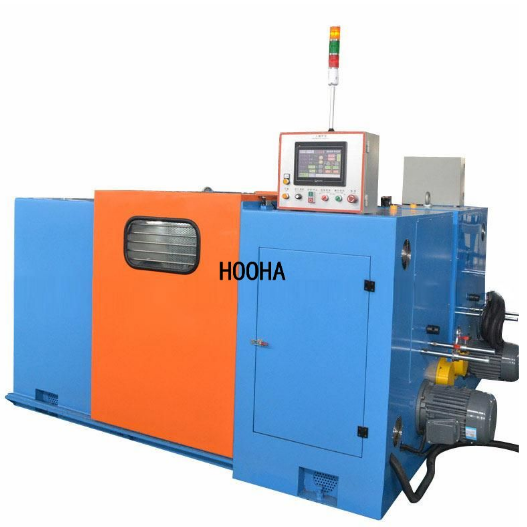News
Site Editor
 Site
https://wirecablemakingmachine.usa72.wondercdn.com/uploads/image/6488079250da3.png
Wire drawing machines are essential equipment in the manufacturing industry, particularly in the production of wires with specific diameters and smooth finishes. These machines work on the principle of reducing the diameter of a wire by pulling it through a series of dies. In this article, we will discuss the working principle and components of wire drawing machines.
Site
https://wirecablemakingmachine.usa72.wondercdn.com/uploads/image/6488079250da3.png
Wire drawing machines are essential equipment in the manufacturing industry, particularly in the production of wires with specific diameters and smooth finishes. These machines work on the principle of reducing the diameter of a wire by pulling it through a series of dies. In this article, we will discuss the working principle and components of wire drawing machines.
Wire drawing machine basics: Discussing the working principle, components
Views: 253
Author: Site Editor
Publish Time: 2023-09-25
Origin: Site
Wire drawing machines are essential equipment in the manufacturing industry, particularly in the production of wires with specific diameters and smooth finishes. These machines work on the principle of reducing the diameter of a wire by pulling it through a series of dies. In this article, we will discuss the working principle and components of wire drawing machines.

Working Principle
The working principle of a wire drawing machine involves the application of tensile force on a wire, which passes through a series of dies. The dies gradually decrease the diameter of the wire, resulting in a smoother surface and greater elongation. The wire drawing machine operates by pulling the wire through the dies, while simultaneously applying a lubricant to reduce friction and enhance the wire's movement through the machine.
Components of a Wire Drawing Machine
A wire drawing machine consists of several essential components that work together to achieve the desired results. These components include:
-
Wire Intake System: This component is responsible for feeding the wire into the machine. It may include mechanisms such as rollers or spools to ensure a smooth and consistent wire supply.
-
Drawing Dies: The drawing dies are the heart of the wire drawing machine. They are made of hard materials like tungsten carbide or diamond and are responsible for reducing the wire's diameter.
-
Drawing Capstans: Capstans are the rotating devices that pull the wire through the drawing dies. They are driven by motors and are designed to maintain a constant pulling force throughout the wire drawing process.
-
Lubrication System: To reduce friction and heat generation during the drawing process, a lubrication system is employed. It ensures a smoother movement of the wire through the dies and minimizes wear and tear.
-
Take-Up System: The take-up system is responsible for collecting the drawn wire and winding it onto spools or reels. It may include mechanisms to control the tension and speed at which the wire is wound.
Advancements in Wire Drawing Machine Technology
Over the years, significant advancements have been made in wire drawing machine technology to improve efficiency, productivity, and quality. Some notable advancements include:
-
Automated Control Systems: Modern wire drawing machines are equipped with sophisticated control systems that allow for precise monitoring and adjustment of various parameters such as speed, tension, and lubrication. This automation minimizes human error and ensures consistent quality.
-
Multi-Pass Drawing: In multi-pass wire drawing, the wire is progressively drawn through multiple sets of dies. This technique allows for greater reduction in diameter and finer surface finish.
-
Wire Cleaning Mechanisms: To remove impurities and contaminants from the wire surface, advanced wire drawing machines incorporate mechanisms such as brushes or chemical cleaning baths. This results in cleaner and more uniform wire surfaces.
-
Inline Testing and Quality Control: Some wire drawing machines now include inline testing and quality control systems. These systems can measure parameters such as diameter, elongation, and tensile strength of the wire during the drawing process, ensuring consistent quality and compliance with specifications.
Wire drawing machines play a crucial role in the manufacturing industry by transforming raw wire into the desired diameter and surface quality. Understanding the working principle and components of these machines is essential for optimizing their performance and achieving quality wire production. With advancements in technology, wire drawing machines continue to evolve, offering improved efficiency and quality control mechanisms.

